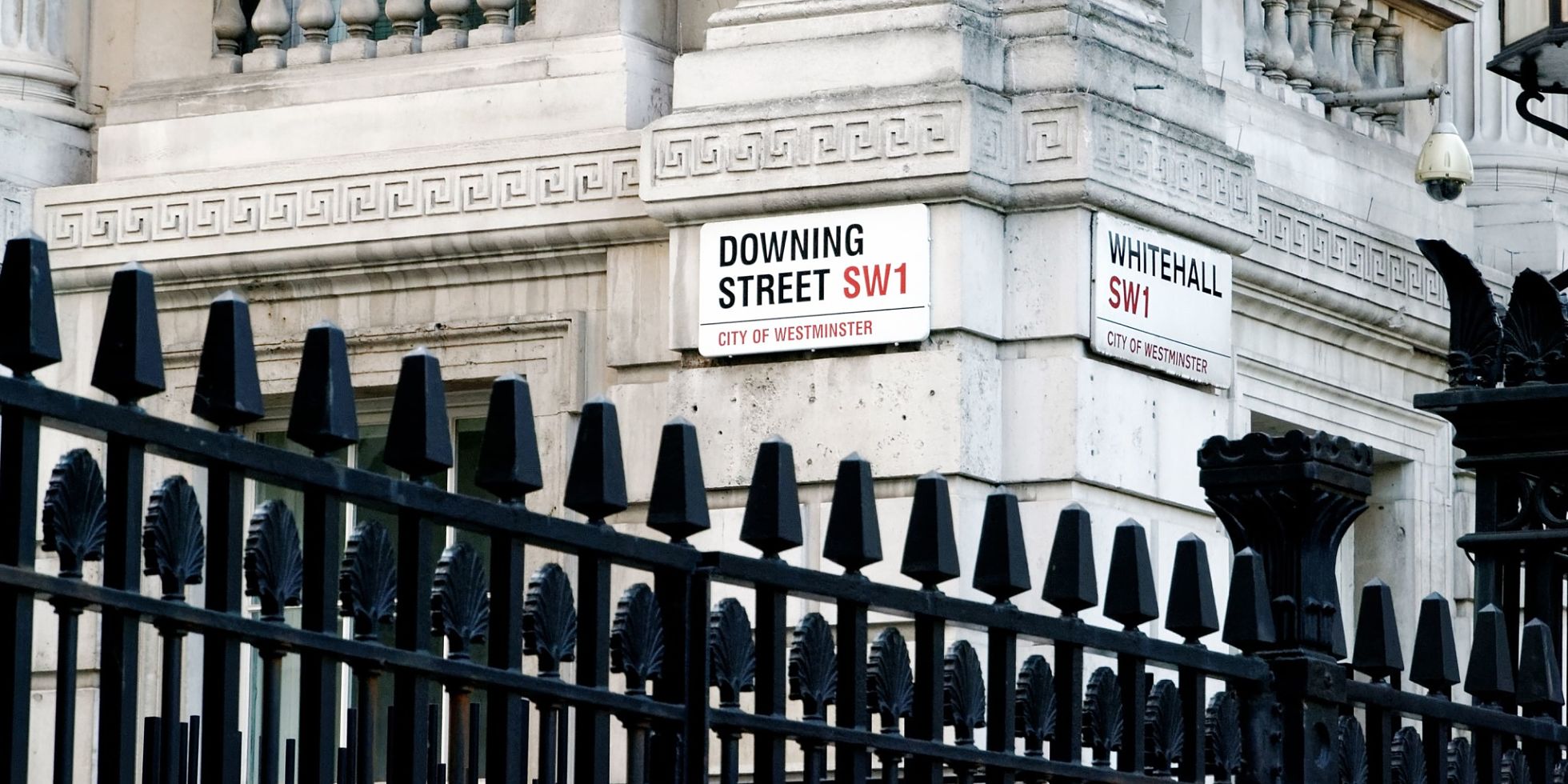Can you brand the unbrandable?

With Boris Johnson taking power at Number 10, we have seen one of the most divisive of politicians rise to power. Many of his ideas will not be to everyone’s liking. David Recchia discusses if one can brand the ‘unbrandable’.
Branding the unbrandable: what is unbrandable?
A good place to start is to define what the ‘unbrandable’ is. I would argue that it is actually the one thing that you cannot inform nor shape what it truly and genuinely stands for. It is for this reason why we often find that the pendulum swings into the arena of politics quite so often. The ‘unbrandable’ is also perhaps the reason why there are certain styles of politicians who are viewed as a lot more controversial. And their subsequent controversies and perspectives are amplified through the multiple channels they have to hand. Despite this, the true intention of brand is to have purpose and promise that can inform and shape what it truly and genuinely stands for. Political parties are far from this clarity as what they traditionally stood for isn’t clearly defined today. These, and many other factors, are perhaps what contributes to the space of politics being divisive and causing an uproar.
Part of the clarity missing from our politics today is the absence of real values. I’m personally fortunate to love what I do and it’s actually what gets me, to a degree, out of bed every morning and gets me excited about what the day ahead might entail. And this is made possible because The Team’s values match mine. We care about what we do, it’s not about working for a client or business, it’s about collaborating and working with them and is why we’re called The Team. We care about our craft, exploring inventive ways to get the best outcome over outputs. Your head doesn’t switch off when it comes to design and ideas — values inform your every day. In relation to the unbrandable, my heart has to be in what the cause stands for.
Branding the unbrandable: designing change
The Team has a fortunate role in society in that we can design change which can have a true positive effect on people. And that is a harder thing to achieve, because in order to get there, first and foremost, you need to get people on board with your thinking. Designing change comes with many a hurdle and can lead to a growing nervousness from clients. The reassurance then is that change comes in many different forms and doing something small and getting it right has a larger impact on galvanising people as opposed to larger campaigns that can turn out to be nothing more than empty loud noise.
Change will always demand brave thinking which requires a great deal of commitment and inspiration. Inspiration to work on brand ideas is derived from realising the gleaming opportunity to really affect something. In order to capture this spark, you simply need to reframe your thinking and adopt a different perspective. There is genius in you being able to challenge yourself, and your client, in order to drive this inspiration. It is easy to fall within the well-trodden path, because there are influencing factors including limited time and money that deter you from doing so. Amongst these influencing factors, you have to find ways to give yourself some clear water to do your best work by which I mean looking elsewhere. Often this means looking at the world around you as opposed to looking at what’s been done before. If the challenge is a behavioural shift, the solution is then how best to get underneath the skin of the issue at hand. You have to immerse yourself in that space and spend time within it and with the respective audiences to really grasp what the triggers are – that’s the factual part.
The creative part is where you uncover the idea that will shift behaviour. It is in this step that you embrace an open mind on where your creative ideas can come from. When you connect two opposing things and bring them together, you realise and see an unexpected, extraordinary connection. That’s where you see you’ve touched upon something that will capture the imagination of the intended audience. In short, creatively seeking out positive disruption. And this disruption happens because of its unexpectedness, or it gives a positive return, such that it might be educational or even inspire a shift in mindset.
This fortuitous moment transpired for me when working for the BBC years ago. I was tasked with putting forward a proposal on the best methods to engage younger audiences for Radio 1’s One Big Sunday. The premise of One Big Sunday is that it was a moving music festival that sought to attract diverse audiences, and at its core, it had a sort of tribal policy behind it. Back then, tribal meant an amalgamation of fans across multiple genres like indie, pop and rock. Around the same time, Anish Kapoor had an exhibition in the Turbine Hall of the Tate Modern and was the first time an artist had managed to fill one of the biggest galleries in the world with one work of art. The sculpture Kapoor displayed comprised of three steel rings joined together by a single span of PVC membrane. I remember observing how people congregated in clusters around the sculpture, it was very much how a tippee can be part of tribal movement that goes from one place to another and another. The exhibition triggered the idea to represent One Big Sunday with a giant pink tippee in ode to this congregation of different people and music genres. It wouldn’t be branded, it would just be an object, but it would generate intrigue and consequently enquiry. It was well received because it did the unexpected by bringing people who love different genres of music together. Inspiration is a fascinating thing that really can come from anywhere, it is simply our duty to seek it out.
Branding the unbrandable: personal beliefs and values in exploration
Personal beliefs and values will always be at play in the exploration of inspiration. Certainly in my younger years as a designer, I would work on projects that I didn’t always agree with. But all of that was part of the learning process and quite vital for both my personal and professional growth. What it taught me is that my actions as a designer could influence positive change. And gradually over the years, you become more inquisitive and question the true intentions of a business or if it’s all just a smokescreen. You know when you’re working with people who have similar principles to yourself, it engenders really positive, constructive debates and ideas. And because of this, they can challenge your ideas. Their passions and energies are well meant, and you want to embrace all of that – you feel and truly believe you can achieve something great.
At The Team, our values have always been clear from the beginning, underlining for instance that we don’t work with tobacco companies or anyone who evidently harms life, or builds arms of any sort. We have a long heritage with working in the third sector; from Comic Relief to our more recent work with Scope and Christian Aid. For campaigns or organisations that won’t always align to mine or our values at The Team, I invite myself to take the same inquisitive mindset I learnt in my younger years. One thing I encourage is putting myself in a position that really seeks to understand an organisation, why it exists and what it does. When designing a brand, we truly need to understand how it operates i.e. how it is structured operationally and economically, how it attracts talent and so on. There are so many facets to understanding an organisation to create an effective brand strategy and platform that brings all this together. When you set out on this journey, you learn a lot more about these organisations.
We have, at The Team, worked with a number of British companies that operate globally that have made quite significant mistakes, yet we have embraced the briefs they put forward around behavioural change in their organisations. This usually involves reassessing the values of the organisation to help them move forward and ensure that they are more principled. But above delivering a manifesto of values, we embed these changes by also helping the employees understand and embrace what these mean to them too. I have learnt that in my role that if you are too one dimensional in your views you don’t get really far. There will always be advocates, the champions who want change, and equally the detractors, who need more convincing. It is fundamental to unpack why any of these people firmly position themselves in their respective camps. You need a broader picture into what the positive and negative forces are. It is listening, demonstrating and playing back what you’ve heard that then connects all these things and begins to shine a light to a path going forward.
Branding the unbrandable: the individual or organisation
Once again, the reassurance for us then is that in those companies, we know that the small change we’ve instilled may eventually have a ripple effect to the rest of their operations. Still, the effect of branding the ‘unbrandable’ can vary depending on the individual or organisation. In the political arena, the politicians themselves are their own brand. As a collective, they then inform the party brand. I firmly believe brand starts from within in any organisation or business. The people in the organisation are the instigators and deliverers of the brand’s promise. The Conservative Party, for example, as a brand is disjointed, disconnected and why? Because the individuals contributing to the brand are not connected on one central idea. Smaller parties, like the Green Party, have their own challenges in that they can often be too one-dimensional.
Politics is an interesting dynamic. Let’s imagine for a moment that political parties, who have dominated for years, were businesses. In the last 20 years, many a revolution has taken place including digital. Traditional businesses took the opportune moment to evolve their offering including collaboration as the way forward and took to buying up talented companies. Yet political parties have halted in this process of evolution. It’s interesting to see that these parties who have been so prominent in society for decades and who are the main forces in our democratic process have stood still in key moments of growth. Wouldn’t it be a real development for this ‘sector’ to collaborate and connect the interests of our planet and its individuals? Doing so would remove any self-interest, reverting the attention back to the people they are trying to represent.
Branding the unbrandable: brand has the ability to change beliefs
Like my earlier point, whether in politics, in music or in any campaign we take on, brand has the ability to change beliefs. It can do a number of different things like shape, sharpen and validate your beliefs. You are forever expanding on your beliefs and principles and to some degree your very reason for being. My role allows me to constantly learn about varied sectors, which means I can share those learnings to our clients too. This therefore informs the brands that I then believe in, not just taking an interest in the products but the lineage of how they came to be. And yet, it’s an inherent human trait that we fall to comfort time and time again. The rhetoric on change has been exhausted and still the scale is unbalanced between speech and action. Acting on the transformation of things requires a lot of hard work because often it is about reframing more than just one thing. So instead what we tend to have is companies and brands that shift the problem.
I think brands see these opportunities and then put out an offer that is based on ease and convenience. It’s a quick win! The digital revolution isn’t always the immediate answer, it can often lead to opening up another problem and is when instead I would encourage the inquisitiveness behind a positive disruption mindset.
Branding the unbrandable: the objective to getting under the skin of any brand
The objective to getting under the skin of any brand is to start with clarity and asking these questions. What I mean by that is getting answers to the bigger “why” questions. It is far easier to ascertain the what, how and when, but when you start circling around why, that’s when compelling creation begins. The very same happens with branding the “unbrandable”.
Politicians, whatever point of view they take, are still in the public domain where some mediums will cast them as a hero and others as the villain. They tend to be forever caricatured as different archetypes. As the public, we then colour in these caricatures based on what they put out, their brand then being coloured by their own actions. The more I think about it, you simply cannot brand a living thing. You cannot brand life. A living organism in its very nature is a brand in itself. Humanity is the identity and it has its’ own tone of voice.
Back to purpose, brands that have been successful have always had this at the heart of what they do. Although that purpose is what has been relevant for decades, it does have to adapt, but at its core, if it’s authentic, the brand continues to remain relevant. All brands should embrace this, even the caricatured politicians.





